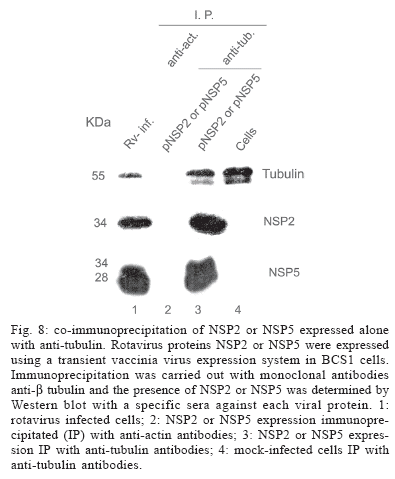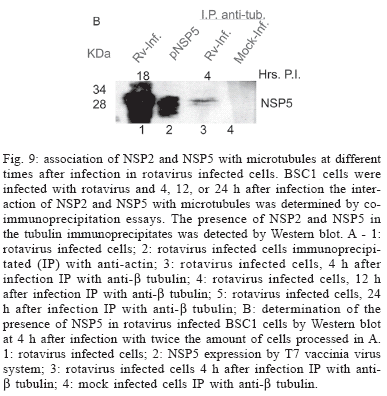Rotavirus replication and virus assembly take place in electrodense spherical structures known as viroplasms whose main components are the viral proteins NSP2 and NSP5. The viroplasms are produced since early times after infection and seem to grow by stepwise addition of viral proteins and by fusion, however, the mechanism of viropIasms formation is unknown. In this study we found that the viroplasms surface colocalized with microtubules, and seem to be caged by a microtubule network. Moreover inhibition of microtubule assembly with nocodazole interfered with viroplasms growth in rotavirus infected cells. We searched for a physical link between viroplasms and microtubules by co-immunoprecipitation assays, and we found that the proteins NSP2 and NSP5 were co-immunoprecipitated with anti-tubulin in rotavirus infected cells and also when they were transiently co-expressed or individually expressed. These results indicate that a functional microtubule network is needed for viroplasm growth presumably due to the association of viroplasms with microtubules via NSP2 and NSP5.
rotavirus; viroplasms; microtubules; NSP2; NSP5










